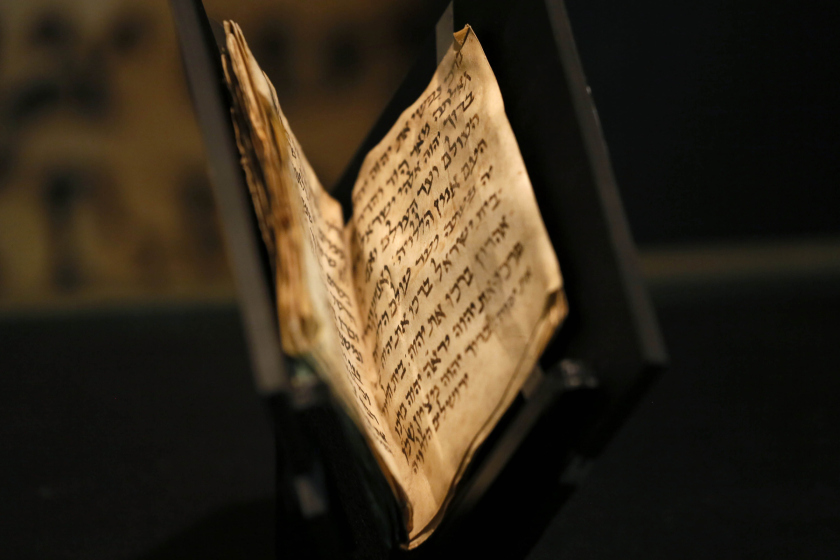 The Sinagoga del Tránsito (or Synagogue of Samuel ha-Levi) was once an important house of worship in Spain for Toledo’s large Jewish population. It is an excellent example of 14th-century Spanish Jewish architecture, especially noted for its superb stucco and Hebrew inscriptions.
The Sinagoga del Tránsito (or Synagogue of Samuel ha-Levi) was once an important house of worship in Spain for Toledo’s large Jewish population. It is an excellent example of 14th-century Spanish Jewish architecture, especially noted for its superb stucco and Hebrew inscriptions.
Founded and financed by Samuel Levi, treasurer and advisor to King Pedro I of Castile, the Sinagoga del Tránsito was built in 1357. It is said that Levi imported  cedars from Lebanon for the building’s construction—à la Solomon when he built the First Temple in Jerusalem.
cedars from Lebanon for the building’s construction—à la Solomon when he built the First Temple in Jerusalem.
The bell tower was added by the Christian religious order of Alcántara, who took over the building after the Jews were expelled from Spain in 1492.
During the war against Napoleon, the synagogue became a military barracks.
 The exterior of the rectangular synagogue is relatively austere but attractive, made of brick and stone. The street-facing facade is pierced by seven round windows enhanced by wooden balconies.
The exterior of the rectangular synagogue is relatively austere but attractive, made of brick and stone. The street-facing facade is pierced by seven round windows enhanced by wooden balconies.
Inside, the main prayer hall is covered with intricate decorations and Hebrew inscriptions. Adjoining the main hall is the Museo Sefardí (Sephardic Museum), a small but excellent museum of Jewish culture. The museum opened in 1971 and contains a variety of Jewish art, ritual objects and tombstones with Hebrew epitaphs, many of them, quite ancient. In 1977, it was declared a national monument.
The museum is made up of five rooms that display aspects of the history, religion, customs and manners of Spain’s Jewish and Sephardic past.
The first room introduces the visitor to the historic, geographic and cultural context of  the origins of the Jewish people. There are archaeological artifacts dated between 2000 BC and the 1st century AD, as well as a wide variety of cultural artifacts pertaining to Jewish beliefs and customs and what it means to be Jewish. Of particular interest are a Torah and a series of liturgical objects.
the origins of the Jewish people. There are archaeological artifacts dated between 2000 BC and the 1st century AD, as well as a wide variety of cultural artifacts pertaining to Jewish beliefs and customs and what it means to be Jewish. Of particular interest are a Torah and a series of liturgical objects.
The second room depicts the arrival of Jews in Spain and life in Roman times. The third room pertains to the life and culture of the Jews in Christian Spain in the 13th and 14th centuries—the converts, the Inquisition, and finally the expulsion in 1492. Rooms four and five tell of the Sephardic people through material evidence from Spain, Europe and North Africa
In the Northern patio there is an exhibition of Jewish headstones from all over Spain. In the East patio are the archaeological remains of what were perhaps the public baths of the old Jewish quarter of Toledo and part of the old principal wall of the synagogue. Both patios are magnificent places to stop and rest.
El Tránsito Synagogue is located on Calle Samuel Levi in the Jewish Quarter. For more information email: museo.msefardi@mcu.es.






